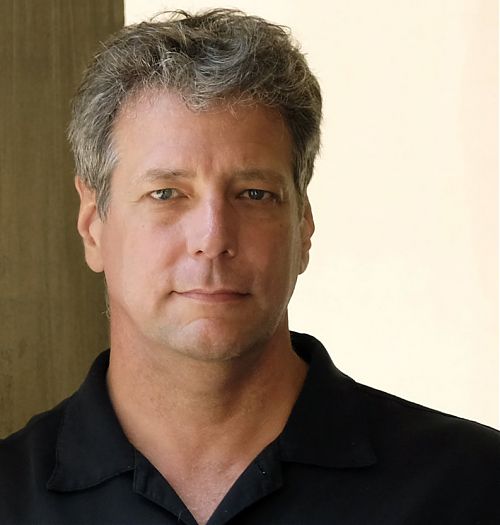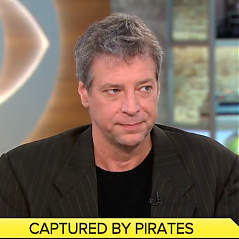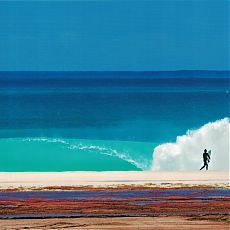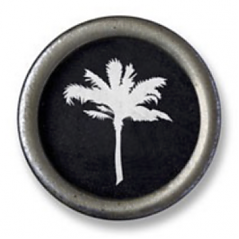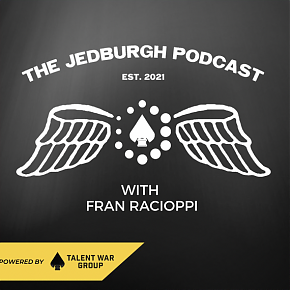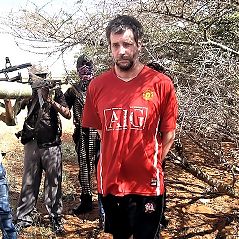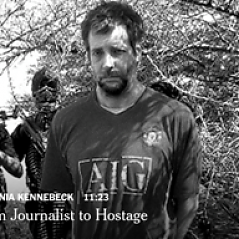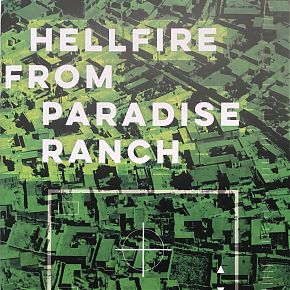BOOM
True story about a bomb threat aboard United flight 945
Radio Free Mike
December 2001
Four hours out of Frankfurt, after lunch, a mild frenzy came over the flight attendants. Shutters were low; there was a lingering smell of burped-up roast chicken and burnt coffee while everyone settled into a nap. The plane should have been stressless and placid, but in a half-doze I noticed a strange impatient rushing up and down the aisles. An emergency service bell sounded and then the captain’s voice came over the PA: “Some of you may have noticed, on your itinerary screens, that we’ve left our flight path to make a sharp turn to the north-east. That’s, uh — that’s on purpose. I’m afraid we have to land in Iceland for a medical emergency. We’ll be landing at the U.S. Naval Station in Keflavik, Iceland, in about twenty minutes, so I’d ask you to please put on your seatbelts and prepare for landing.”
This was in May 2001. Our flight had taken off three hours late. My wife and I had been up since five to meet a series of taxis and trains that had swept us, unnecessarily, to Frankfurt in plenty of time. How long would we be in Keflavik? And where was this sick guy? No one in sight had sagged unnaturally against a pillow or tumbled into the aisle. Maybe he was dying in First Class.
Another cockpit voice told us we would have to disembark in Keflavik. This voice was young and tense. It used the word “situation,” as in, “We’ll need your help in dealing with this, um — situation —” and urged us, or actually ordered us, to leave our handbags behind. Just coats and pills, if we took pills. We might be out of the plane for a few hours. The temperature in Keflavik was 45 degrees.
The plane descended through a murk of clouds and fog. Lines of trucks with flashing lights waited beside the runway: buses, jeeps, chartreuse fire engines. I had a book by Heinrich Böll open to a story called “In der Finsternis,” or literally, “In the Gloom,” and the young German beside me said, “That fits.”
We landed on the military end of the airport, which served commercial flights as well as the Navy. As we filed down the rolling stairs high-strung people in Mylar jackets hustled us into old Navy buses. Blinking trucks had surrounded our plane. Weather in Frankfurt had been warm, so a lot of us were coatless — we wrapped up in United Airlines blankets, like refugees. The American presence in Keflavik meant we could read the lettering on the chartreuse trucks: “Haz. Mat. & Emergency Vehicle.” For fires, right? Or bombs?
When they were sure all passengers had been patiently and evenly ushered into buses, the pack of uniformed flight attendants — we saw this through our bus window — bolted from the plane.
The buses trundled us back and forth across the airfield with a slow and stupid deliberation I associate with the military. We visited, briefly, a remote air terminal, then herded back onto the bus and went to a hangar, where we stood in line to let Navy personnel examine us with white-loop metal detectors. Then back to the bus, where we could see the plane squatting alone on the cold grey field. We learned later that Keflavik had never hosted a plane as large as our 747, and I got the feeling no one quite knew what to do with it. The tanklike, chartreuse Haz. Mat. trucks parked in formation around the plane, watching to see what it might do. They kept a cautious distance. “You know what that means,” one bus passenger said.
Finally we trundled toward a big commercial terminal. A crowd of people, inside, were waiting for us. Two news cameramen with their made-up correspondents stood at the entrance to a concourse. One man in the entourage said, “It’s right down there, you can’t miss it,” and pointed down the concourse. We seemed to be nearing a place where everything would be revealed. I just smiled and thanked him.
“Can’t miss what?” said my wife.
He meant a smallish, modern waiting area called the Leif Erikson International Air Terminal. Leif Erikson is a national hero in Iceland. A small bronze statue of him posing at the prow of a boat commemorates his discovery of the New World in 1000 AD. His air terminal has two high, dramatic banks of windows, with images in stained glass of goddesses and fish from Icelandic mythology suspended in front of each window by triangular networks of white rods that suggest ice crystals. The rest of the space is brownish and warm. It was a pleasant enough place, but there was nowhere to sit, and soon the 297 people from our plane were simply in the way of other passengers rushing to make their flights. Lost-looking Germans and Americans wandered off to the gift shop or cafeteria, to the bathroom, to a bank of pay phones; and this disorganization would be typical of the way United handled our entire detour to Iceland. No one took charge. We milled around, uninformed, for two hours.
Finally the captain of our plane arrived with an Icelandic national police chief and a suited representative from Iceland Air. The United captain was a genial but not especially happy-seeming man, in brown tinted glasses, with a Southern accent and a dry quiet sense of humor. He had a barrel-shaped body and thin grey hair. The chief of police (or the national “Lögreglan”) was short and thoughtful, also greyhaired, with tiny round glasses under his gloss-beaked cap. Both were dour but likeable. The captain said “a threat had been made against the airplane” — a handwritten threat, which they believed to be a hoax, but dogs were scheduled to search the plane. This would take five hours. Afterwards, the flight attendants had a contractual right to an overnight break, so we would leave Iceland first thing in the morning. The captain acted friendly, apologetic, authoritative, and grim. He never used the word “bomb.”
Most people on United 945 to Chicago had to meet a connecting flight: There were Germans on a package holiday to San Diego, a black-haired woman and her boyfriend from Seattle, a loud woman in a wheelchair who complained enough about the general inconvenience of landing in Iceland to embarrass the rest of us; and three blustery, self-conscious Saudis. When the captain mentioned a “handwritten threat,” the idea was that somebody on our plane had issued it, a passenger who was still among us in the Leif Erikson air terminal unless the last two freewheeling hours had given him or her a chance to book a flight to London or start running across the mossgrown lava fields toward Reykjavik (not an impossibility). Our captain had said the Keflavik police and the FBI were already on the case, and the three Saudis were aware of themselves as suspects; their blustering self-consciousness was a way of keeping up a profile. They wanted to talk to people. They were young and heavy-built, in sneakers and jeans; the most garrulous one had a conversation about Islam with the noisy wheelchair-bound lady. During this chat he flashed a passport showing his face wrapped in a turban. The old woman was openly suspicious of the men — to the point of acid, Ugly-American rudeness — but after their little talk she had made a strong new friend.
Whether all three men were friends travelling together, or just compatriot strangers who closed ranks in an emergency, wasn’t clear. One of them went missing while everyone had lunch in the Leif Erikson cafeteria. I watched the other two, questioned by the Keflavik police, shrug their shoulders and say they hardly knew the guy. That may have been true. When the missing man turned up an hour later, official suspicion of the Arabs was already starting to dissolve.
After lunch, the plush-seated tour coaches appeared. Whenever a rich organization has to appease and control a large group of people, it’s only a matter of time before the plush-seated tour coaches roll out, with bad pop on the radio. This caravan of six buses carried us to a Navy hangar where our handbags were neatly arranged on the floor. The Haz. Mat. team had collected not just our bags but also books and bric-a-brac from the seat pockets (which they slipped into labelled plastic bags) and spread everything out for German shepherds to sniff. If our situation in the terminal had been disorganized and confusing, this search-and-sort part of the operation was professionally handled. We found our bags with no trouble, although some people complained that theirs had been rifled through. There was one small, strange thing: When I picked up a white plastic bag full of presents from relatives in Holland, a quirky middle-aged man who owned the satchel it was leaning against ripped the bag from my hands, thinking it might belong to him, then handed it back without apology, picked up his own bag, which looked nothing like mine, and walked away shaking his head.
§
From the hangar we rode in a long caravan to Reykjavik, in search of hotels. No one told us we were going to Reykjavik: We just sat in our plush-seated coaches for two hours, ignorant and fidgety, while bad pop piddled from the speakers and the mossy lava fields rolled away to our right. The grey murk had lifted, and as the sun lowered in the west there was a streak of cold clear sky above the ocean.
Iceland, like Hawaii, is a volcanic eruption from the sea-bottom. It has geysers, volcanoes, and hot springs as well as glaciers and fjords. The public art seems obsessed with this theme of ejaculating or bursting-out: Around the Keflavik airport we saw two funny sculptures, first a giant egg fractured by a hatching beak, then a bending square tower of flags or metal flakes that looked like a geometric spume of color coming out of the frozen ground. The landmark church in Reykjavik, Hallgrímskirkja, has a triangular stone steeple rising like a stern dagger above the city, most of which is just a modern conglomeration of colored boxes, lots of recent unpretty housing tracts and Bauhaus-influenced office buildings. Reykjavik is new to being a world city. It started to boom only after the Second World War, with a massive shift of people off the land; and the unfinished buildings rising everywhere in Reykjavik are like economic variations on the public-art theme.
Icelanders are so peaceful that the national cops don’t even bother with guns. I saw several blond, pretty Lögreglan officers at the air terminal and thought that a country where so many federal police are cute and female must be some kind of paradise. Iceland also has no military: The American base at Keflavik is enough to ensure the country’s defense. In return, Iceland belongs to NATO, though from reading around on the Internet I have the sense that Icelanders would rather be neutral and independent. They ended a centuries-long subjection to Denmark in 1944, which left seven years of true self-reliance before U.S. patronage started in 1951. They have a unique language, the oldest (non-continuous) parliamentary system in the world, and no natural enemies. But Iceland is one of those proud little places, like Poland — or Afghanistan — that seem forever swirled up in the squalls of a more powerful country’s ambition.
§
We spent an hour looking for a place to sleep in Reykjavik. The buses pulled in front of one massive chain hotel at a time, idling until enough passengers shuffled out to fill the free rooms; then the caravan moved on. I won’t describe the disorganization, the testiness, the endless offers of free meals (“I don’t want something else to eat, I just want to go to bed!” one German shouted), or the business-traveler bleakness of our hotel. The sun set around eleven — Iceland’s night is short in May — and the next morning, coming down to the lobby, we found a leisurely tour of Reykjavik on offer, in another plush-seated coach, instead of the expected ride to the airport. Our plane, someone said, had a flat tire. Did I mention how the Keflavik airport never handled 747s? A new tire had to be flown from London.
Later we stood around the Leif Erikson terminal for three or four hours, again with no information — not even a departure time — until the black-haired woman from Seattle finally asked the harried workers at Icelandair’s information desk for a United phone number. One of them scribbled on a scrap of paper. “I’m sorry, this is the best I can do. It’s a Chicago number.” The black-haired woman dialled it, and when she explained our dilemma (she told me afterwards), the man on the other end asked,
“How’d you get this number?”
“The Icelandair desk gave it to me. I’m one of the passengers. Do you know anything about what happened?”
“I haven’t thought about anything else for twenty-four hours.”
At last! Someone in charge. This useful man said a passenger had used lipstick to write, “BOOM,” on a bathroom mirror.
“‘BOOM’?” I repeated.
“‘BOOM,’” said the woman.
“That’s it?”
“That’s what the guy told me.”
“Did he say anything else?”
“They think it’s a hoax.”
“For God’s sake,” I said. “I could have told them that.”
We left for Chicago at six that evening. United had sealed the bathroom as a crime scene. In the meantime, Associated Press had reported new details. The prankster had used lipstick to write, “Bomb. 1021,” a message no one could understand, according to AP; but some authorities believed it meant that a bomb on our plane would explode at 10:21 a.m., Eastern Daylight Time. (Probably a worst-case scenario.) We landed in Keflavik around 10:30 EDT, meaning the flight crew and Hazardous Materials people must have been working on the assumption, as we herded onto Navy buses, that our plane was about to blow.
No one’s been arrested or charged. The FBI field office in Chicago suspects it was all a silly joke. And yet the wall of half-truths and misinformation about this incident is thick and high: When I called United for more facts in September, 2001, an operator informed me that our plane had landed in Keflavik “because of weather.” (She had to look that up in a file.) But the State Department also issued a Worldwide Caution for American travelers on May 29, one day after we emergency-landed, and now I think it was in the jittery, general context of its warning that our flight was ordered down.
“The U.S. Government learned in early May 2001 that American citizens abroad may be the target of a terrorist threat from extremist groups with links to Usama Bin Ladin’s Al-Qaida organization. On May 29, the defendants in the case of U.S. v. Bin Ladin were found guilty on a number of counts in connection with the bombings of the U.S. Embassies in Nairobi, Kenya and Dar Es Salaam, Tanzania. The U.S. Government is not aware of any specific threat in response to the verdicts.
“Nevertheless, U.S. citizens are urged to maintain a high level of vigilance and to take appropriate steps to increase their security awareness to reduce their vulnerability.
“This Public Announcement expires” — by default — “on August 29, 2001,” or thirteen days before the World Trade Center fell.
Michael Scott Moore
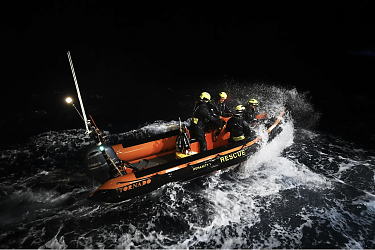
Rafts of the Medusa
Why every day on the Mediterranean is a new scandal for Europe. For both Foreign Policy and Die Zeit.
California’s Attempt at Land Reparations
How land seized from a Black family 100 years ago may be returned. The Bruce’s Beach story from a hometown angle, for The New Yorker
Day of the Oprichnik, 16 Years Later
The novelist Sorokin, the president Putin, his man Dugin, and the war in Ukraine. For n + 1.
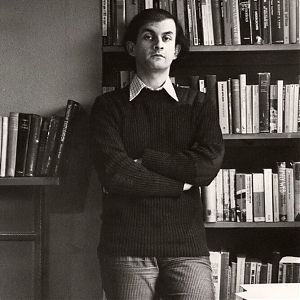
The Rushdie Narrative
Knife and the crumbling ground beneath free speech
There Must Be Some Way Out of Here
An essay on Bob Dylan, “All Along the Watchtower,” and Somali pirate captivity.
That Mystic Shit
The life of Lou Reed in two biographies

Cambodian Seafarers Talk About Pirates
Mike visits Cambodia for The New Yorker to talk about a harrowing shared experience in Somalia
The Muslim Burial
Cambodian hostages remember digging a grave for one of their own. A sequel chapter to The Desert and the Sea
The Real Pirates of the Caribbean
Adventure journalism in Southern California. A travel essay for The Paris Review.
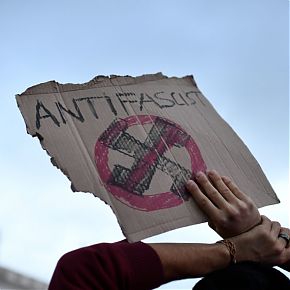
Antifa Dust
An essay on anti-fascism in Europe and the U.S., for the Los Angeles Review of Books
Was Hitler a Man of the Left?
A book that helped Republicans in America lose their damn minds.
Ghosts of Dresden
The Allied firebombing of Dresden in 1945 destroyed the baroque center of what Pfc. Kurt Vonnegut called, in a letter home from Germany, “possibly the world’s most beautiful city.”
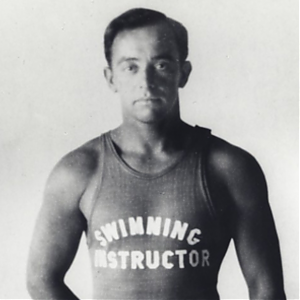
George Freeth, Biographed
The first academic treatment of America’s surf pioneer. Also, was Freeth gay?
It’s Called Soccer
Americans live on what amounts to an enormous island, defended on two shores by the sea, and we’ve evolved a few marsupial traditions that nobody else understands.
Tilting at Turbines (in the Severn River)
The morning was clear and cold, with frost on the church steeple and the cemetery grass. I had a quick English breakfast at a white-cloth table, in my wetsuit, and drove to Newnham, a village on the Severn River in Gloucestershire, parking near the White Hart Inn.

The Curse of El Rojo
I’d packed the car lightly — a bag of clothes, a bag of cassette tapes, a backpack of books, a few essential tools.









